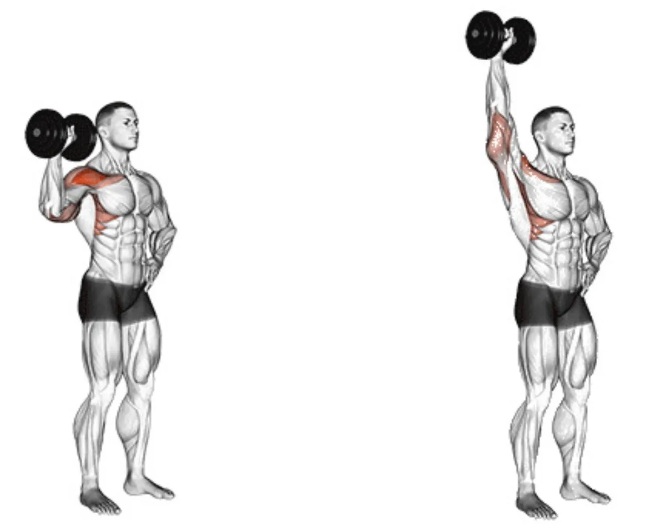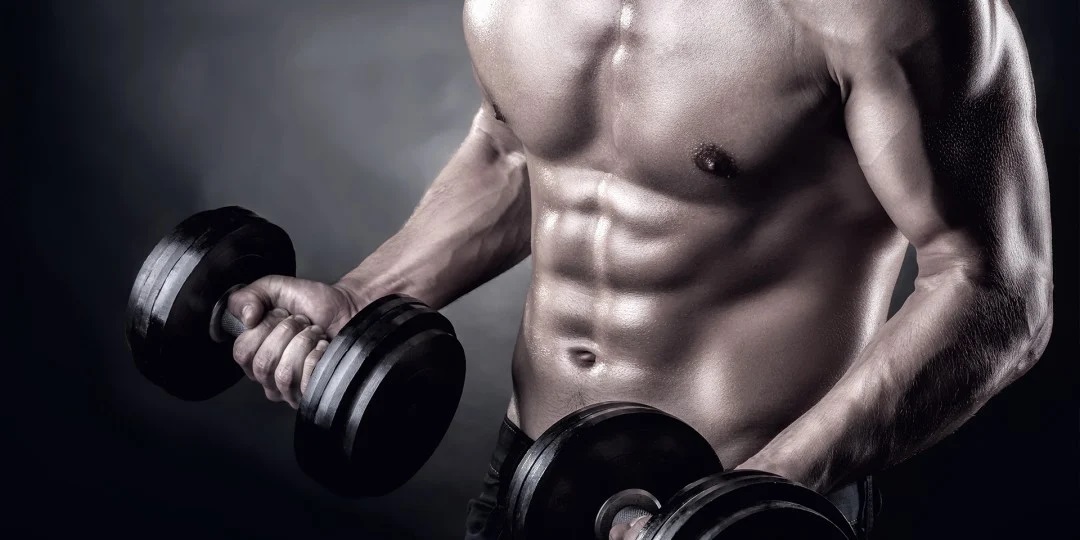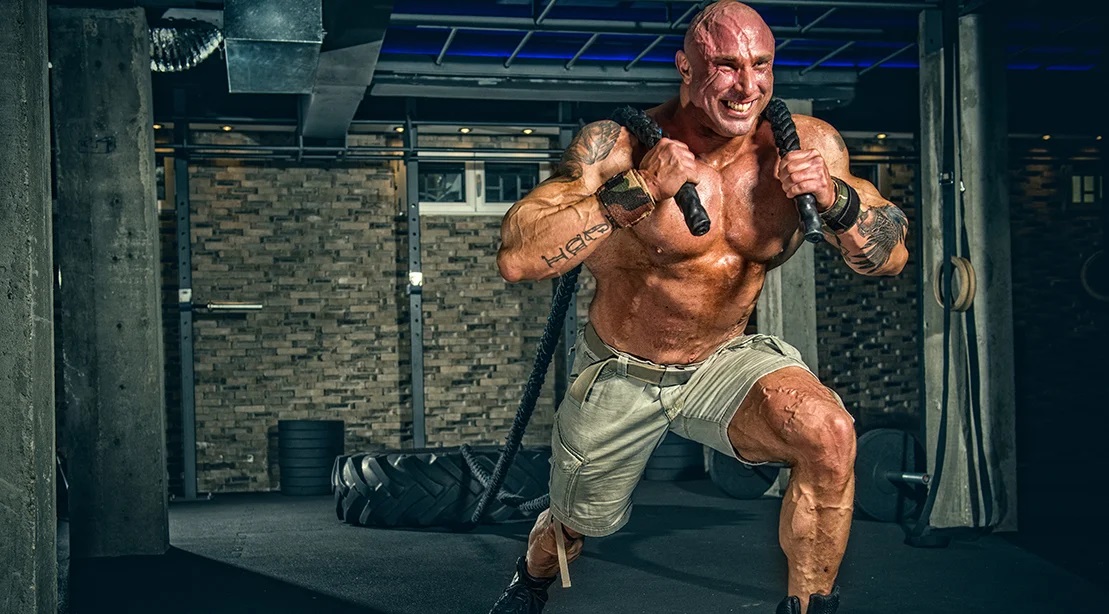Single Arm Dumbbell Press
Different exercises target different parts of the body. With regular training, it isn’t hard to reach your goal.
However, it’s essential to perform the exercises correctly and follow the rules and tips. If you’re starting an exercise routine for the first time, you must also seek professional guidance to perform safely.
Among the many routines, the single arm dumbbell press is one of the most popular and useful exercises. But what is it, and what is its purpose? Today, let’s find out some useful aspects about it. So, keep reading to find out more about it in the following sections.
What is Single Dumbbell Press?
In very simple terms, the single dumbbell press is a type of dumbbell bench press, but you press only one arm overhead at a time.
This particular routine requires more stability than the typical dumbbell press, as your body has to control the urge to roll over on the bench.
When you perform the exercise for the first time, you might find it a little tricky. But with time, you can certainly master it. You must use only one arm at a time when doing the single-arm dumbbell press and place the other arm at the side or overhead.
What Muscles Does The Single Arm Dumbbell Press Work?
The single-arm dumbbell press targets several muscles in your arms, including:
- Triceps: It’s also called triceps brachii, a huge thick muscle on the upper side of the arm. Its appearance is that of a horseshoe on the backside of the arm.
- Pecs: Pectorals are muscles between the shoulder bones, upper arm, and the front of the chest. They’re connecting muscles that help you to move your arms up, down, and sideways.
- Anterior deltoids: It’s the muscle at the front part of the shoulder and is part of the three heads of the deltoids, with the lateral and posterior forming the remaining heads.
- Rotator cuff: it’s a group of muscles and connective tissues that encircle the shoulder joint. The upper arm bone stays in the shoulder’s shallow socket because of it.
- Core: The muscles surrounding the spine, hip, and abdominal viscera belong to a group called the core muscles. The core is responsible for preventing the spine from bearing excessive load. The muscles protect your spine and keep your body stable.
Single Arm Dumbbell Press Benefits
So, the exercise targets the muscles listed above. Let us now find out what benefits the exercise provides when you do it regularly.
It Makes Your Shoulders More Stable
Many athletes are prone to rotator cuff injuries. The single-arm dumbbell press can help strengthen the muscles and tissues around that area.
When doing the one-arm press, you focus on keeping your shoulder blades in a retracted position. The activity will stop you from straining your joints which in turn will allow you to move without hindrance.
It Can Aid In Keeping Your Strength in Balance
When you do a regular bench press, you don’t notice the weakness in one of your arms because the stronger one balances it. When you do the one-arm press, you notice which arm is stronger or weaker.
The exercise helps you to work on the weaker arm more so that both arms can become equally strong and the imbalance is removed.
It Dares Your Core Even More Than Typical Dumbbell Bench Press
When you perform a single-arm dumbbell press, your obliques are at hard work, so your body doesn’t rotate. Experts say it is an ideal “anti-rotation” routine that enhances your core’s efficiency in stabilizing your spine even more.
It offers a Wider Range of Movement Than a Typical Barbell Bench Press
Regular barbell bench press allows you to bring your arms down only to your chest without straining. But when you perform the single-arm dumbbell press, it enables your arms to go down further.
Since you can move more, it benefits your hypertrophy as it gains more strength. When you do the single-arm exercise continuously for a while, you will have enormous gains in that area.
It Prevents Bilateral Deficit
Regular barbell bench press tends to make you work harder on your stronger side to compensate for your weaker side. Over time, it produces a bilateral deficit as one side becomes more dominant and the other weaker.
One side of your body will not be as forceful as the other. This can also lead to injuries during exercise. Single arm dumbbell press allows you to focus on the weaker side for as long as possible. Then you can work equally with both arms. In time, you will have equal force on both arms.
Is Single Arm Dumbbell Press Good?
Single arm dumbbell press is suitable for:
- Improving strength imbalances
- Injury recovery
- Preventing further injuries
- Boosting shoulder stability
- Strengthening your core
Who Should Consider Doing Single Arm Dumbbell Press?
You can do the single-arm dumbbell press if:
- You want to double up your bench press strength
- One of your arms is weaker than the other
- You want to improve the stability of your shoulders
- You are searching for more methods to include more pressing volume in your exercise session
- You are recovering from an injury and want to bring back your pressing strength up
Disadvantages of Single Arm Dumbbell Press
While the exercise offers several benefits, it’s not without flaws. When doing the exercise, you:
- Can’t hold much weight
- Can’t perform faster
- May find it hard to do the same number of reps with each arm
Common Mistakes Associated with Single-Arm Dumbbell Press
Many athletes commit mistakes when doing the exercise, and it can be harmful to your body. They include:
- Not placing your hips on the bench
- Putting out your elbows to the side
- Taking the dumbbell too low
- Keeping your body loose (You should keep it tight)
The single-arm dumbbell press is effective for several aspects mentioned earlier. Hence, if it suits your purpose, you can include the routine in your program.
However, seek the right advice and guidance from an expert fitness instructor. Else, you may get injured. You can do it alone once you become accustomed to the exercise.



